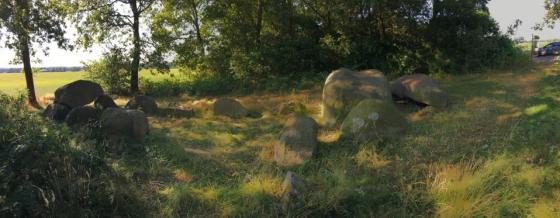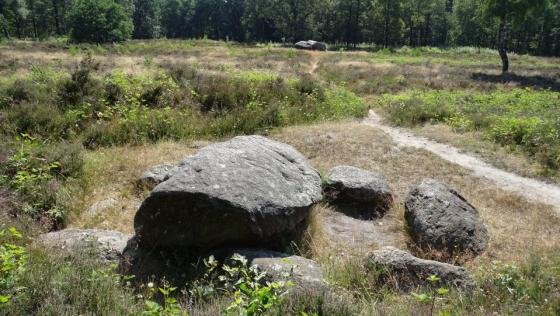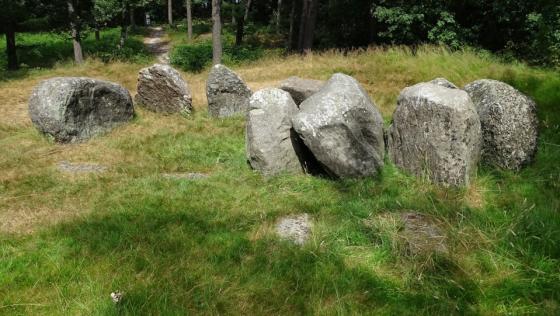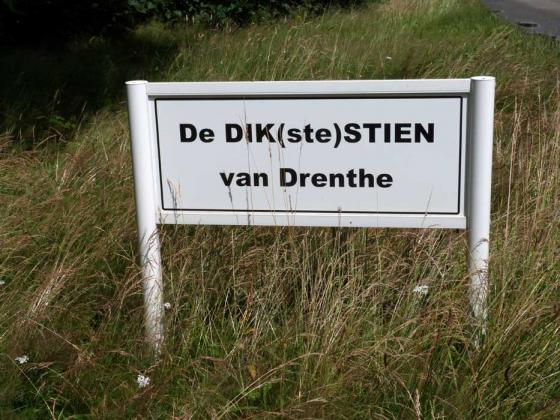Reconstruction of the Hunebed
When Professor A E van Giffen first visited hunebed D49 in 1919 it was in a very poor state. Standing in an open, treeless setting, it had been ravaged by stone robbing during the 18th and 19th centuries to such an extent that only nine stones remained, only one of them a capstone (the stolen stones would probably have been used to reinforce coastal defences). Following further research in 1925, Van Giffen came up with the idea of undertaking a complete reconstruction of hunebed D49, to create, for educational purposes, an idealised hunebed as it would have appeared when originally built 5000 years ago. To show how the hunebed looked both with and without a covering mound, two-thirds of the monument were to be hidden under a barrow.
Although details of the plan were finalised by 1934, it was not until a full excavation of the dolmen had been undertaken in 1958 to gather as much information as possible on the original positions and number of stones that the matter was finally progressed. A total of four capstones, two sidestones, ten kerbstones, four passage sidestones and a passage capstone were brought to the site in order to reconstruct the monument, many of them originating from the destroyed hunebed D33 Valtherveld. Among the reasons for selecting D49 for this reconstruction, apart from its original sorry state, was the fact that it was now secluded in a State Forest and that the area could be easily closed off from the public by fencing.
D49 was reconstructed with new flooring and dry masonry between the stones, and two thirds of the passage was buried under a mound. Inside the passage, a fence prevented access to the crypt, where some facsimiles of Funnel Beaker pottery, based on discoveries made at D19 Drouwen were placed. Unfortunately, these were so realistic that they were stolen. When some of them turned up again, they were acquired by the Harderwijks Museum in 1965 in the belief that they were original Funnel Beaker artefacts.
Once reconstruction was completed in 1959, visitors had for several years to pay an entrance fee to visit the monument, which was only allowed with a guide. D49 is the only hunebed in the Netherlands that shows what a hunebed originally looked like.
Read more about D49 in Hans Meijer’s Dolmens of the Netherlands.




































